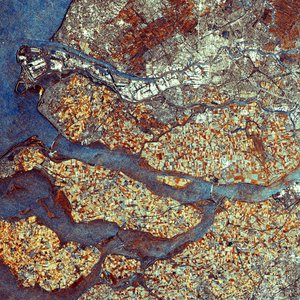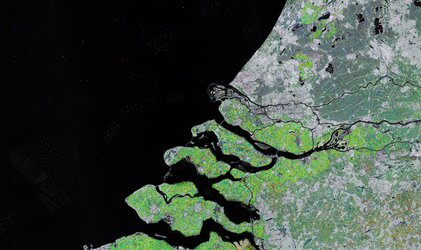Accept all cookies Accept only essential cookies See our Cookie Notice

About ESA
The European Space Agency (ESA) is Europe’s gateway to space. Its mission is to shape the development of Europe’s space capability and ensure that investment in space continues to deliver benefits to the citizens of Europe and the world.
Highlights
ESA - United space in Europe
This is ESA ESA facts Member States & Cooperating States Funding Director General Top management For Member State Delegations European vision European Space Policy ESA & EU Responsibility & Sustainability Annual Report Calendar of meetings Corporate newsEstablishments & sites
ESA Headquarters ESA ESTEC ESA ESOC ESA ESRIN ESA EAC ESA ESAC Europe's Spaceport ESA ESEC ESA ECSAT Brussels Office Washington OfficeWorking with ESA
Business with ESA ESA Commercialisation Gateway Law at ESA Careers Cyber resilience at ESA IT at ESA Newsroom Partnerships Merchandising Licence Education Open Space Innovation Platform Integrity and Reporting Administrative Tribunal Health and SafetyMore about ESA
History ESA Historical Archives Exhibitions Publications Art & Culture ESA Merchandise Kids Diversity ESA Brand Centre ESA ChampionsLatest
Space in Member States
Find out more about space activities in our 23 Member States, and understand how ESA works together with their national agencies, institutions and organisations.
Science & Exploration
Exploring our Solar System and unlocking the secrets of the Universe
Go to topicAstronauts
Missions
Juice Euclid Webb Solar Orbiter BepiColombo Gaia ExoMars Cheops Exoplanet missions More missionsActivities
International Space Station Orion service module Gateway Concordia Caves & Pangaea BenefitsLatest
Space Safety
Protecting life and infrastructure on Earth and in orbit
Go to topicAsteroids
Asteroids and Planetary Defence Asteroid danger explained Flyeye telescope: asteroid detection Hera mission: asteroid deflection Near-Earth Object Coordination CentreSpace junk
About space debris Space debris by the numbers Space Environment Report In space refuelling, refurbishing and removingSafety from space
Clean Space ecodesign Zero Debris Technologies Space for Earth Supporting Sustainable DevelopmentLatest
Applications
Using space to benefit citizens and meet future challenges on Earth
Go to topicObserving the Earth
Observing the Earth Future EO Copernicus Meteorology Space for our climate Satellite missionsCommercialisation
ESA Commercialisation Gateway Open Space Innovation Platform Business Incubation ESA Space SolutionsLatest
Enabling & Support
Making space accessible and developing the technologies for the future
Go to topicBuilding missions
Space Engineering and Technology Test centre Laboratories Concurrent Design Facility Preparing for the future Shaping the Future Discovery and Preparation Advanced Concepts TeamSpace transportation
Space Transportation Ariane Vega Space Rider Future space transportation Boost! Europe's Spaceport Launches from Europe's Spaceport from 2012Latest
Zeeland, Netherlands
Thank you for liking
You have already liked this page, you can only like it once!
The Copernicus Sentinel-2 mission takes us over Zeeland – the westernmost province in the Netherlands.
Zoom in to see this image at its full 10 m resolution.
Located around 150 km from Amsterdam, Zeeland consists of a complex system of islands, peninsulas and waterways. It also comprises Zeeuwsch-Vlaanderen – a strip of the Flanders mainland between the Western Scheldt (Westerschelde) and Belgium.
The province of Zeeland lies on the large river delta at the mouth of several rivers, like the Scheldt (Schelde) and Meuse (Maas) rivers. The lighter aqua colours in the image depict the shallow waters of the delta with riverbeds and several sandbanks visible. The brown coloured waters indicate a higher sediment content, which contrasts with the darker waters of the North Sea.
The Port of Rotterdam, the largest seaport in Europe, is visible top-right in the image. Antwerp, in Belgium, is visible in the bottom-right and the quaint city of Bruges can be seen in the bottom-left of the image.
Zeeland is one of the main agricultural provinces in the Netherlands with one of the largest areas of arable farmland. The patchwork of agricultural fields visible on the islands and mainland show the fields in the various stages of growth or harvest. The area supports cereals, potatoes, beets, cattle and horticulture.
Large parts of Zeeland, which translates to ‘sea land,’ lie below sea level. The province was the site of a deadly flood in 1953 brought on by a combination of high spring tides and a strong windstorm that severely damaged the low-lying coastal region.
As a result, the Dutch government began to implement the Delta Project – an elaborate system of dykes, canals, dams and bridges to hold back the North Sea. In this image, the 9km-long Eastern Scheldt Storm Surge Barrier (Oosterscheldekering) is visible between the islands of Schouwen-Duiveland and Noord-Beveland.
Since sea-level rise is a key indicator of climate change, accurately monitoring the changing height of the sea surface over decades is essential for climate science, for policy-making and, ultimately, for protecting the lives of those in low-lying regions at risk.
The Copernicus Sentinel-6 Michael Freilich satellite, set to launch in November, is the first of two identical satellites to be launched sequentially to provide accurate measurements of sea level change.
Both satellites will reach 66°N and 66°S – a specific orbit occupied by the earlier missions that supplied the reference sea-surface height data over the last three decades. This orbit will allow for 95% of Earth’s ice-free ocean to be mapped every 10 days.
This image, acquired on 30 May 2020, is also featured on the Earth from Space video programme.
-
CREDIT
contains modified Copernicus Sentinel data (2020), processed by ESA -
LICENCE
CC BY-SA 3.0 IGO or ESA Standard Licence
(content can be used under either licence)

Earth from Space: Zeeland, Netherlands

Zeeland, Netherlands

Rotterdam as seen by Envisat

Earth from Space: Southwest Netherlands















 Germany
Germany
 Austria
Austria
 Belgium
Belgium
 Denmark
Denmark
 Spain
Spain
 Estonia
Estonia
 Finland
Finland
 France
France
 Greece
Greece
 Hungary
Hungary
 Ireland
Ireland
 Italy
Italy
 Luxembourg
Luxembourg
 Norway
Norway
 The Netherlands
The Netherlands
 Poland
Poland
 Portugal
Portugal
 Czechia
Czechia
 Romania
Romania
 United Kingdom
United Kingdom
 Slovenia
Slovenia
 Sweden
Sweden
 Switzerland
Switzerland

























